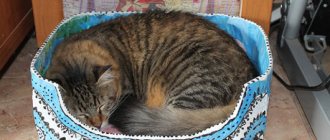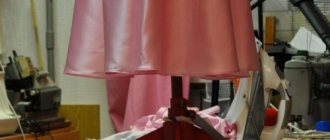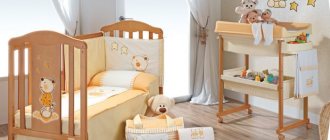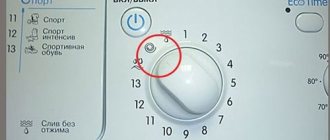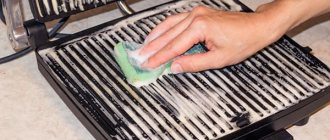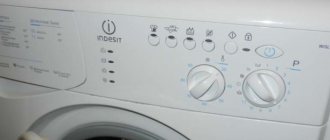Mattresses and all other items in the apartment need care, washing and cleaning to prevent the growth of bacteria and insects. Cleaning a mattress is very difficult. It is large, weighs a lot, and cleaning it requires a lot of time and nerves. Covers, or mattress pads as they are also called, help simplify the care of mattresses. After all, unzipping the zipper, removing the cover and washing it in the washing machine, and then using a hot iron to destroy all dangerous germs is much easier and faster. How to sew a mattress cover with your own hands is discussed in this article.
Why do you need a case?
Each mattress is covered with a cover, and sometimes even more than one. During production, mattresses are covered in stationary covers that cannot be removed. They are sewn from dense, strong fabric, usually beautiful and expensive (for example, jacquard). Unfortunately, such a mattress cover cannot be removed and washed, so to prevent its rapid wear and tear, you need to stock up on another cover - a removable one that can be washed regularly. You can buy it in a store or sew it yourself.
A mattress cover is a very necessary and useful thing.
It's no secret that the bed absorbs everything from the human skin: sweat, dirt, dead cells, and besides this, for those who like to have breakfast in bed, as well as lunch and dinner, it happens that crumbs, drops and other food particles get into bed, and not always a sheet or even a bedspread can keep the mattress clean. Therefore, regular cleaning, washing and ironing of the cover covering the mattress is extremely necessary; it can prevent the occurrence of various diseases and maintain aesthetic cleanliness and neatness.
Note! An important incentive for purchasing a removable mattress cover is wear and tear. Mattresses are expensive and it is often impossible to change them, but a mattress pad will cost much less and can be changed more often, pleasing the eye with an abundance of colors.
There are different types of mattresses and they all need a mattress protector.
All mattresses need cleanliness - a child’s mattress, a swing mattress, and a regular sleeping one; the mattress on which a child sleeps especially requires maintaining cleanliness.
Removable or non-removable cover
As mentioned above, the cover can be removable or not. Mattresses are placed in non-removable covers during their production. And the best option would be a second mattress cover, removable and put on top of the stationary one. There are original mattress covers with a fastener. Such mattress covers are convenient when purchasing a mattress, because by unzipping the zipper, you can make sure that the mattress is actually made from the material stated.
You might be interested in this: Sewing a steering wheel cover for a car: how to sew on a cover
But removing such a cover for washing is very inconvenient, because it is made of thick, heavy fabric and will not fit into every washing machine. Sewing a non-removable cover is all the more irrational, because its most important function is to keep the mattress clean, and, accordingly, it itself must be clean.
Stationary zippered cover
A removable mattress pad usually has a zipper. It can be located along the entire perimeter of the mattress, only on one side, at an angle, covering one side in length and the side adjacent to it in width. The fastener can also be button, Velcro, lace, elastic, and so on.
The cover can only cover the top of the mattress
Important! It is not necessary to sew a removable mattress pad in the form of a cover covering the mattress on all sides. It is more convenient to make it hide only the top and side parts, and only slightly capture the bottom, tightening it with an elastic band.
Summing up
As you can see, making a mattress with your own hands is quite a feasible task. What is needed for this?
- The desire to see things through to the end and a determined attitude.
- Determination of needs (size, height, desired degree of rigidity).
- A little theoretical knowledge (about the types of fillers, adhesives, fabrics for covering).
- Availability of quality materials.
- Accuracy in work, precision of movements, patience, perseverance.
- The cover and mattress cover can be sewn yourself or to order.
Selecting tools
Before you start sewing a mattress cover, you need to prepare the tools that you may need:
- to create a pattern - paper, ruler, pencil.
- scissors;
- tape measure;
- chalk or pins for transferring the pattern onto the fabric;
- threads and needles;
- sewing machine;
- fabric and elastic.
You will need a standard set of sewing tools
Photo gallery of different types of mattress covers for children and adults:
PreviousMattressesWhich mattress is better, more practical: spring or springless?
Next
MattressesHow and with what to seal an intex air mattress at home?
Choosing fabric for a mattress cover
Almost any fabric can be used for a mattress cover. But there is still a division of fabric types in accordance with the purpose of the cover. For example, the fabric could be:
- hypoallergenic;
- waterproof;
- warming;
- synthetic;
- combined;
- natural.
For a regular mattress cover, natural fabrics (linen, satin, calico) are still recommended. They are light, breathable, do not cause allergic reactions and wash well.
Important! Natural fabrics tend to shrink, so before you start sewing, it is recommended to wash the cut in hot water and iron it thoroughly.
Synthetic fabrics are cheaper, absorb moisture well and are suitable for people with allergies. Another advantage of synthetics is wear resistance. They are more durable, do not lose color, and are easy to wash. If there are no contraindications, then it is quite possible to use synthetics (for example: microfiber or polycotton).
Also for the cover, quilted fabrics like blankets, down or foam filling can be used.
Quilted cover
Of course, you can take any color of the fabric, some prefer bright shades with patterns or flowers, but do not forget that the cover will come into contact with moisture (sweat, accidentally spilled water, wet hair), and rich colors can fade and leave a mark on the bed linen. linen. Therefore, it is preferable to choose calm tones without unnecessary patterns.
It is better to choose a calm color
Taking measurements
The fastest and most convenient way to sew a mattress cover is to choose a model that covers the top and sides, and is secured with an elastic band. The step-by-step instructions for sewing such a product are clear and easy.
You might be interested in this: Patterns and sewing procedures for Russian men's blouses
Before sewing a mattress cover, you need to know only three measurements: the length, height and width of the mattress. The length and width of the product are laid out on a piece of fabric, then the thickness of the mattress is added on all sides and another 15 cm for the hem.
Only three measurements are needed
Important! If the width of the fabric is smaller than the width of the mattress, then you will need to measure half the width twice in length, remembering to leave allowances for the connecting seam.
Finishing touch
Now all that remains is to sew the cover. Baste the pieces along the stitching lines and sew them by machine (by hand). You can put a cover on the pillow.
If you plan to decorate the pillow with embroidery, applique or other decorative elements, it is much more convenient to do this before starting to sew the parts.
You don't have to come up with a design yourself. You can easily look through existing photos of a pillow cover in catalogs or various collections and repeat the model you like.
An IKEA cushion cover can be the perfect boost to develop your own design skills.
90 photos of new sets of curtains and bedspreads for the bedroom- Thin mattress: advice on choosing from experts. 104 photos of modern mattresses and their applications
- Women's dressing gowns - modern models and materials. 105 photo ideas for selecting dressing gowns
How to transfer a pattern to fabric
The resulting pattern looks like an ordinary rectangle, and, in principle, for such a simple model it is not needed at all. But if you can’t do without it, then for quick convenience you can prepare a pattern for a quarter of all sizes, and then cut it step by step:
- spread the cloth on the floor;
- fold it in half;
- fold it in half again, only in a different direction;
- Place the prepared part of the pattern on the fabric and pin it with pins or outline it with chalk.
Pattern of a cover with an elastic band
Important! When applying part of a pattern, the main thing is to keep control and not confuse the direction of length and width.
Benefits of a branded product
If the DIY process turns out to be too complicated or there is simply no time for it, you can turn to traditional methods and purchase a branded product. The Molto Bene company offers options for Italian mattresses for every taste. A wide range of inexpensive and affordable models, original and exclusive options.
And in conclusion, I would like to note that the main advantages of high-quality mattresses are sound and healthy sleep, the adoption of an anatomical position for the spine and joints. The design of the mattress is designed in such a way as to relieve tension from the entire body and allow muscles to relax.
PLEASE SHARE THIS POST!
We cut and sew a mattress cover with our own hands
After transferring the pattern onto the fabric, you can start cutting and carefully cut out the future cover along the chalk line. Since the mattress cover will have an elastic band, there will be only one seam - along the perimeter of the product.
Sew a seam around the perimeter
Moreover, it will not be just a hem seam, but one so that an elastic band can be pulled into the resulting space. First you need to hem the edges of the fabric so that it does not fray, bend it 0.5 cm, and then another 1 cm and baste or secure with sewing pins. All that remains is to sew the seam on the sewing machine.
How to sew a zipper to a sofa cushion cover
Do not use metal zippers or tractor zippers for the cover. Buy an inexpensive, one-piece twisted zipper, 60-70 cm long, which can be easily shortened.
To sew a zipper along the edge of the cover, use a special zipper foot.
Now secure the second part of the zipper with pins; it is not necessary to baste the lock tape to the edge of the case with threads.
Sew in an elastic band
There are several ways to sew elastic into a mattress cover. For example:
- Use an elastic band; the elastic is sewn onto the folded fabric using a zigzag stitch.
- The corner method is when pieces of elastic attached to the fabric grab the mattress at the four corners, preventing the fabric from moving.
- The standard method is to create a drawstring into which the elastic is pulled.
Note! In order to beautifully sew in an elastic band, one of the corners must be pre-processed, leaving a hole in it for pulling the elastic through, and the remaining corners must be stitched in the usual way. Insert an elastic band into the remaining hole using a pin and tighten it.
The final touch is to insert the elastic
It is more convenient to do this by pulling the cover over the mattress so as not to make a mistake with the length of the elastic band. Having stretched the elastic on the mattress, you can easily trim off the excess length and tie or sew the edges of the elastic together.
You might be interested in this: Simple patterns and sewing procedures for Baby Bon
How to make a mattress smaller at home?
If for some reason the finished mattress cannot be returned, but needs to be reduced in size (shortened, narrowed), you will need to perform 5 simple steps.
- Undo the sheathing on the desired side.
- Use a marker and a long strip to mark.
- Cut off the springless block (if necessary, disconnect part of the spring block).
- Shorten (narrow) the sheathing accordingly.
- Carefully sew up the cover.
Accessories
When sewing a mattress cover, you will definitely need accessories. It must be strong, flexible and wear-resistant. May be useful:
- Zipper. It should not break or jam when used for its intended purpose, and at the same time, the zipper should be strong and flexible to withstand washes and vibrations of the mattress.
- Rubber. Mattress toppers with corner elastics will require a material that is wide, durable, and flexible. Weaving elastic is suitable; it holds its shape and elasticity for a long time, and tolerates washing well. The elastic band must be of medium width so that it can bend freely, but at the same time it must be strong and elastic. The elastic for use in the drawstring is similar in appearance to underwear, but at the same time it is made of latex threads and covered with polyester fiber, due to which it does not stretch for a long time and does not lose its shape.
- Edging braid. When sewing a mattress cover, edging braid may be needed to strengthen the seams and protect fabric sections from fraying, giving rigidity in the right places.
Case with zipper
Model with sides
For mattresses with rounded corners, you can sew a mattress topper model with sides. This model is also used if the length or width of the fabric is not enough for a one-piece cover.
If the mattress has round edges, then it is important to build the correct sketch:
- The upper part must fully correspond to the dimensions and curves of the mattress.
- The pattern of the side parts will be separate. Its height consists of the mattress height, hem allowance and seam allowance. If the length of the fabric allows, then you can cut out the side in one piece (add the width and length of the mattress, multiply by 2 and add seam allowances). If the length is not enough, then you can make the length of the sides in accordance with the length and width of the mattress, not forgetting about the seam allowances, and then sew them at the corners.
- Sew the sides to the main part.
- Make a drawstring and insert an elastic band in the same way as for a one-piece cover.
A model with a quilted top and sides.
A mattress cover will help housewives keep their sleeping area clean. It will protect the mattress from dirt, bacteria and germs, as well as harmful insects living in bedding, and will also prevent the occurrence of possible skin and other diseases caused by microorganisms. The mattress cover is easy to wash, dry and iron, it will take much less effort than cleaning the mattress.
Waterproof covers are indispensable for children's mattresses
Sewing a mattress cover with your own hands is very simple and quite quick; all you have to do is choose the right model and good fabric.
We create a comfortable mattress ourselves
Having decided to create an orthopedic mattress with your own hands, you need to consider a number of points.
- Qualities. Making a mattress with your own hands is quite possible. It can even be exciting. However, if you intend to get a quality product, you cannot do without accuracy, perseverance, patience and scrupulousness.
- Theory. If you only have the desire, but no special skills or even theoretical knowledge, it would not hurt to read several articles about the types of modern fillers and their properties, the required degree of mattress hardness and the materials used for sewing covers.
- Materials. The search for the materials themselves - blocks or layers of filler, special glue and fabric for covering - is a crucial moment. The degree of difficulty in finding high-quality, durable and safe materials will depend on the region in which you live. A big city means great opportunities, where there is an abundance of assortment. Residents of small towns and villages will have to spend time searching for a reputable manufacturer on the Internet and pay extra for delivery.
- Tools. Next, you will need to ensure that you have the necessary tools for the job.
- Case. If you don’t know how to sew, you need to think about someone who can help you calculate the amount of fabric for the cover and can make it.
If you have high-quality materials and a careful approach to business, you can count on quite good results!
